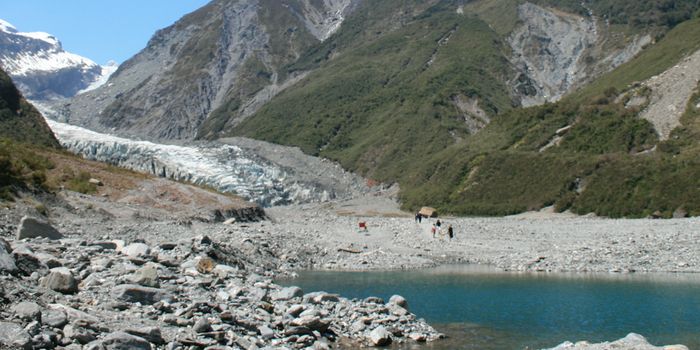Studies Indicate Gulf Stream is Weakening, Warming & Moving
The Gulf Stream is a critical part of the global climate system; in this current, warm waters move from the Caribbean, along the US East Coast, and then across the Atlantic Ocean. It brings heat from the tropics into higher latitudes as part of the Atlantic Meridional Overturning Circulation. The Gulf Stream is a powerful current that has a major influence on the world's weather patterns and storms, and if it changes, there may be major ripple effects.
Now, two new studies from scientists at Woods Hole Oceanographic Institution (WHOI) have demonstrated that the Gulf Stream is changing significantly.
One report published in Geophysical Research Letters has found that movement in the Gulf Stream has slowed by 4 percent in the past 4 decades, with "conclusive, unambiguous observational evidence." This study did not investigate the causes of these changes, however.
Another study reported in Nature Climate Change, however, did find that climate change was to blame for other changes in the Gulf Stream. This work used more than 25,000 temperature and salinity profiles that were taken from 2001 to 2023 to show that in the past two decades, the Gulf Stream has gotten warmer than the global ocean, and had also moved closer to the coast.
"The warming we see near the Gulf Stream is due to two combined effects. One is that the ocean is absorbing excess heat from the atmosphere as the climate warms," said study leader Robert Todd, a physical oceanographer at WHOI. "The second is that the Gulf Stream itself is gradually shifting towards the coast."
The researchers determined that the biggest changes have happened in the near-surface layer of the Gulf Stream. The data showed that there was an average increase of about 1°C (1.8 °F) over the past two decades, and this layer is getting increasingly lighter than those below. The Gulf Stream is also moving about 5 kilometers (3.1 miles) per decade closer to shore on average.
This research used Spray autonomous underwater gliders and around 4,000 autonomous profiling floats that move with the currents of the ocean, and can dive from the surface to about 2,000 meters (6,560 feet) deep.
These changes could potentially have a big impact on local wildlife too. Todd noted that as the Gulf Stream gets closer to the coast, big temperature variations may have a large impact on fisheries. It could be possible for water temperatures to go from 12°C to 20°C within a very short period of time, for example.
Sources: Woods Hole Oceanographic Institution, Nature Climate Change, Geophysical Research Letters









